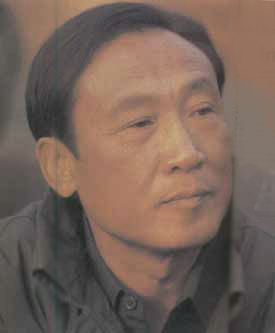He was defeated by China, but the late Khun Sa who died in 2007 without achieving his lofty ideals is being honored by a successful young Chinese businessman, who has invested millions to construct a museum for the controversial Shan freedom fighter, ...
He was defeated by China, but the late Khun Sa who died in 2007 without achieving his lofty ideals is being honored by a successful young Chinese businessman, who has invested millions to construct a museum for the controversial Shan freedom fighter, according to sources from Xixuangbanna Dai Autonomous Prefecture, Yunnan Province, China.
 Zhao Kun, about 35, President of the Yunnan Hai Cheng Industrial Group Stock Co.Ltd., himself a native of Xixuangbanna, reportedly thinks his money is well spent for the man who had once said, “Opium is the Shans’ nuclear weapon.”
Zhao Kun, about 35, President of the Yunnan Hai Cheng Industrial Group Stock Co.Ltd., himself a native of Xixuangbanna, reportedly thinks his money is well spent for the man who had once said, “Opium is the Shans’ nuclear weapon.”
The museum site is on a 200 acre land northeast of Jinghong, the prefecture capital. “He might be a druglord,” Zhao was quoted as saying. “But not a grain of his white powder (i.e. heroin) was exported to China.”
Nevertheless, Khun Sa’s 25,000 strong Mong Tai Army, then regarded as the strongest armed opposition movement, came to the beginning of its end in 1994, when, on China’s suggestion, he moved the bulk of his troops from the Thai border in the south to the Chinese border in the north. His former closest aides say the MTA was sold off by Beijing’s agents to the Burma Army which then launched a devastating operation against it.
Khun Sa died broken-hearted in 2007 under the custody of the military security service in Rangoon. He was 73.
Zhao Kun is also planning to renovate the museum constructed by Khun Sa’s followers in Ban Hintaek aka Therd Thai, Mae Fa Luang district, Chiangrai province, Thailand.
Khun Sa aka Zhang Chifu was born of a Chinese father and Shan mother in Loimaw, one of the former three top producers of opium in 1934. He became a Burma Army backed home guard leader in 1960. The world first took notice of him when he fought against the ex-Kuomintang forces in the triangle area between Laos, Thailand and Burma in 1967, which brought about “The Golden Triangle” into a household name. In 1969, he was imprisoned in Mandalay. But five years later, he returned to freedom following a spectacular kidnapping of two Russian doctors working in Taunggyi. He surrendered in 1996 after a mutiny broke out among the ranks in the wake of his disastrous northern expedition in 1994.
For more information on the museum project, please visit www.yn-hc.cn.


